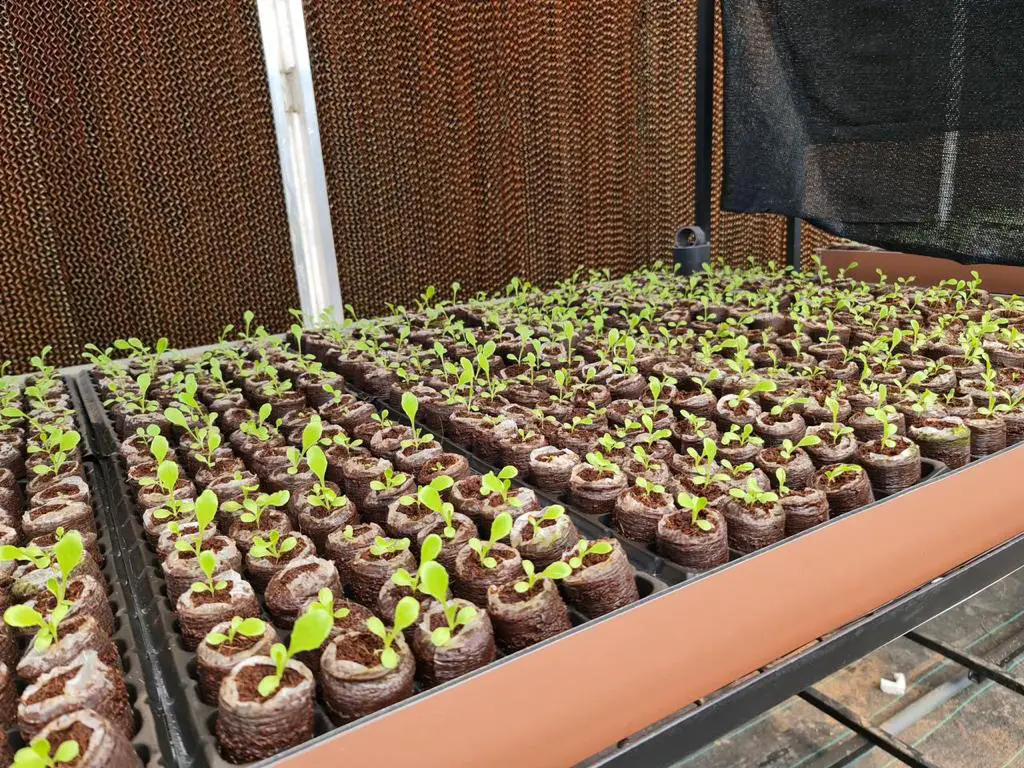How and When to Feed Lettuce Seedlings.
Lettuces are the first thing that comes to mind if you need quick output. Because they mature in around 60 days and have straightforward nutrient needs, lettuce is prevalent among hydroponic growers. Yet, one can also overlook its growth stages.
Knowing when to start feeding and how much makes a difference in the quality and yield of your lettuce. This short post outlines a strategic feeding schedule for lettuce from seedling to harvest.
Lettuces and most leafy greens are pretty straightforward plants. If it’s a tomato or a cucumber, they need different nutrient mix at different stages. Thus, for lettuce, we only worry about the concentration, not the mix. You can use the same nutrient solution with different concentrations at different stages.
Our focus in this post is to feed hydroponically grown lettuces. You may still learn something if you’re a soil-based grower. Also, we use EC to measure the nutrient concentration because it’s universally applicable. You may have to convert the recommended levels if you’re using PPM or TDS.
The germination stage
Lettuce seed takes about a week to germinate. If you don’t see leaves coming from the seeds by the end of the second week, the chances of these lettuce seeds germinating are meager.
These two leaves are also called the Cotyledons. Plants don’t need energy from outside to produce the Cotyledons. Every seed contains enough energy to get the Cotyledons up and ready for photosynthesis.
Thus, you don’t need to feed lettuce seedlings during germination.
Lettuce germination conditions aren’t the scope of this post. But in short, lettuce seeds need water, oxygen, correct soil temperature, and light. Yes, just water should do.
First true leaves
The Cotyledons will start photosynthesis as soon as they turn green. Soon, they will produce two more leaves. These are the first true leaves of the new plant. They haven’t come from the mother plant through the seeds.
First, true leaves in lettuce may start growing at different times. You may see them another week after germination. During winter months, it may take up to 20 days.
True leaves need nutrients to construct their cells, chlorophylls, etc. Thus, this is the right time to feed your seedlings.
But wait. These seedlings are too young to tolerate inorganic nutrient solutions. Organically grown seedlings get nutrients in small amounts from the soil. Yet, lettuces started in a nursery and fed with an inorganic nutrient solution may get burned.
Most lettuce growers choose to grow with inorganic nutrient solutions. Organic nutrients take a long time to be absorbed, so reducing the nutrient concentration is the best way to feed the seedlings.
We recommend an EC level of 0.8 at the true leave stage.
Transplanted seedling
Commercial growers transplant lettuce seedlings within one month of sowing. Soil-based growers may use different techniques. Since we focus on hydroponically grown lettuce, we prefer a step-by-step approach to feed the seedlings.
Seedlings at one-month-old are strong enough to accept a concentrated nutrient solution. Yet lettuces don’t need a high EC to grow. Unlike fruiting plants, lettuces can thrive at 1.0 EC.
Thus, as soon as we transplanted the seedlings, the nutrient concentration increased to 1.0 EC.
As lettuces mature
As discussed, lettuces may thrive even at a 1.0 EC nutrient solution. Yet, to ensure there’s no nutrient deficiency, we can gradually increase the concentration.
A good approach is to step up EC levels by 0.2 every week. In this method, the nutrient concentration in the second week of the transplant will be 1.2. By the time lettuces are ready for harvesting, we may have reached 1.6.
By stepping up the concentration every week, we avoid burning altogether.
This approach also facilitates pH management. If your water is already acidic, a nutrient solution will decrease the pH further. Lettuce thrives at around the 5.5 to 6.5 pH range. Thus, you may have to use pH adjusters to bring the pH back to this range. In the step-by-step approach, you don’t have to do that in the early stages. Even by harvesting, your lettuces are mature enough to be more forgiving for lower pH ranges.
Final thoughts
The best way to feed the lettuce seedlings is to wait for the first true leaves. But in commercial hydroponics, it’s not practical. On large-scale farming, we feed a batch of lettuce all at once. Checking for true leaves one by one is a time-consuming task.
Thus, the following schedule will average out and feed seedlings without burning.
| Week | Lettuce growth stage | Nutrient concentration (EC) |
| Until week 2 | Germination | 0-0.2 (Water) |
| Week 3 & 4 | Seedling | 0.8 |
| Week 5 | Transplanted Seedling | 1.0 |
| Week 6 | Plant | 1.2 |
| Week 7 | Plant | 1.4 |
| Week 8 | Plant nearing the harvest | 1.6 |
Finally, although we haven’t suggested EC beyond 1.6, lettuce is a somewhat forgiving plant. In its latter stages, lettuce can even tolerate EC levels around 2.4. Thus, make sure there’s enough nutrient. You don’t have to be too precise.
Keep growing……..!


